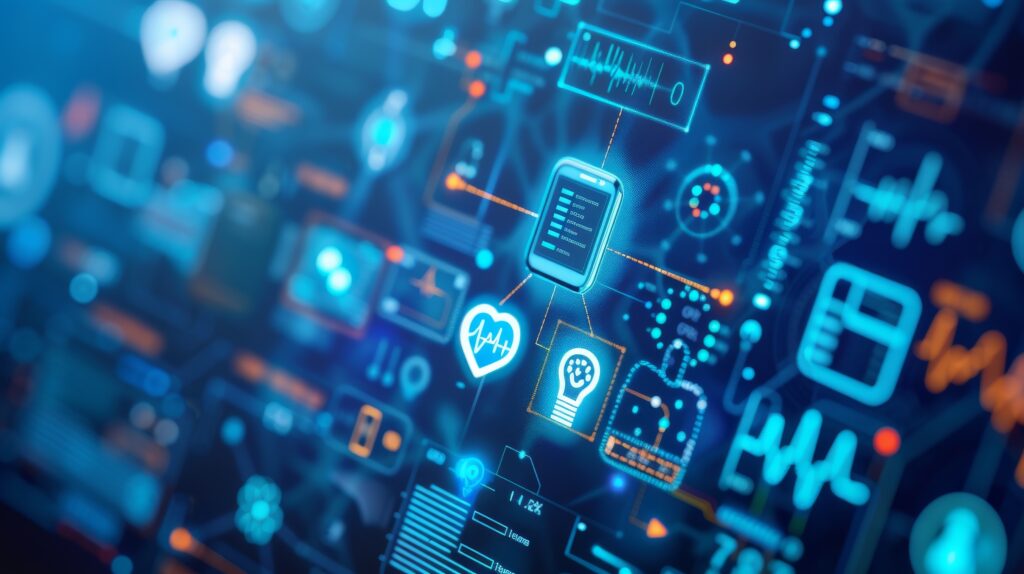Medical education is evolving. Traditional methods, such as cadaver dissection and lecture-based instruction, are now complemented—and in many cases, replaced—by emerging technologies. Tools like virtual reality, augmented reality, artificial intelligence, and wearable tech are changing how medical students learn, practise, and prepare for clinical responsibilities.
Virtual Reality: A Safe Space to Practise
One of the most significant shifts in medical training involves the use of virtual reality (VR) to simulate clinical procedures. This allows students to develop practical skills without the risk of harming patients. Surgical platforms such as Osso VR replicate the feel of real operations, enabling repeated practice in controlled environments.
The use of VR increased significantly during the COVID-19 pandemic, when access to in-person teaching was severely restricted. Many institutions have since retained and expanded these programmes, noting that VR can capture detailed data on performance—tracking hand movements, precision, timing, and accuracy—and providing feedback faster and more objectively than traditional methods.
While students increasingly turn to digital tools for practical training, some also seek external support for written assignments. Services like EssayWriterCheap offer academic writing assistance, helping students manage the workload of theory-based modules so they can focus more time on clinical skills development.
Augmented Reality: Interactive Anatomy
Augmented reality (AR) enhances the real world by layering digital elements onto it, making it particularly useful for studying anatomy. Students can explore three-dimensional models of organs and body systems, rotating and dissecting them in ways that static images or physical specimens do not allow.
AR applications on tablets and headsets allow learners to peel back layers of the body, observe animated physiological processes, and test their knowledge with integrated quizzes. The flexibility of these tools supports learning anytime and anywhere, which is especially valuable for those balancing practical placements with academic responsibilities.
Evidence from various educational programmes suggests that the use of AR can lead to improved understanding of spatial relationships and better retention of anatomical information compared to conventional methods.
Artificial Intelligence: Personalised Learning Paths
Artificial intelligence (AI) is becoming central to personalised medical education. AI-driven platforms monitor student progress and adjust learning materials in response to individual weaknesses. If a student struggles with a particular topic—such as cardiovascular diagnoses or drug interactions—the system will present additional targeted questions and cases.
Some AI systems are also being used to create virtual patient simulations. These are designed to mimic real consultations, where students take histories, ask follow-up questions, and propose diagnoses. The AI responds dynamically, sometimes introducing unclear symptoms or red herrings, forcing students to think critically.
AI enables a level of customisation previously impossible in large-group settings. It also supports a more efficient use of time by focusing attention where it is most needed, allowing students to improve faster and with greater precision.
Simulation Centres: Learning in Realistic Environments
Modern simulation centres provide high-fidelity learning environments that replicate emergency departments, operating theatres, and intensive care units. These centres use responsive mannequins capable of simulating breathing, bleeding, seizures, and more. They allow students to face complex clinical situations in a safe but realistic context.
This hands-on training goes beyond individual skills. Simulation centres often include collaborative exercises where medical, nursing, and allied health students work together—mirroring the interdisciplinary teams found in actual healthcare systems.
Unlike hospital placements, which are dependent on patient availability, simulation centres offer consistent and repeatable scenarios. This ensures that all students receive equitable training, regardless of clinical rotation timing or location.
Wearable Devices: Performance Data in Real Time
Wearable technologies are now being trialled as part of clinical education. Devices such as head-mounted cameras or biometric sensors can record student interactions with patients—provided consent is given—and allow educators to review real performance, not just written reflections.
These wearables can also monitor physiological responses such as heart rate, stress levels, or even eye-tracking during diagnosis or procedures. Such data gives a new dimension to feedback, offering insights that are otherwise difficult to detect. Over time, this information could be analysed to create personalised improvement plans for each student.
Barriers and Considerations
While these technologies bring clear benefits, they also raise concerns.
Cost is a significant factor. High-end VR headsets, simulation mannequins, and AR systems represent a considerable investment. As a result, access to these tools can vary widely between institutions, risking a divide in educational quality.
There is also the risk of over-reliance on simulation. No virtual system can fully replicate the subtle cues of real patients or the unpredictability of live clinical environments. Maintaining a balance between digital tools and traditional, in-person learning remains essential.
Data privacy is another growing concern. As more platforms collect detailed analytics on student performance, institutions must ensure that this data is stored securely and used ethically. Transparent policies will be key to maintaining trust.
In the academic side of medical education, some students still choose to pay for research paper writing to help manage time pressures. While this may provide short-term academic support, clinical competence must be developed through direct engagement with patients, simulations, and active practice—not through outsourcing critical learning components.
Conclusion
The shift towards immersive and adaptive learning tools in medical education is well underway. New technologies are redefining what students can learn, how they understand it, and how quickly they reach clinical readiness.
Virtual and augmented reality make complex topics more accessible. AI provides individualised learning strategies. Simulation centres recreate the pressures of hospital settings. Wearable devices give real-time performance insights. These tools, when used thoughtfully and ethically, prepare students not only to pass exams but to thrive in the realities of modern healthcare.
Medical education is no longer confined to the anatomy lab or lecture theatre. It now lives in headsets, handheld devices, cloud platforms, and simulated wards—quietly but fundamentally changing how tomorrow’s doctors are trained.
Disclaimer
The views and opinions expressed in this article are those of the author and do not necessarily reflect the official policy or position of Open Medscience. The inclusion of third-party services, products, or companies—such as EssayWriterCheap—is for informational purposes only and does not constitute an endorsement. Readers are advised to exercise their own judgment and conduct further research before engaging with any referenced tools or platforms.
This article is intended for general educational purposes and should not be considered as professional, legal, or medical advice. While every effort has been made to ensure accuracy at the time of publication, Open Medscience accepts no responsibility for any errors or omissions, or for any outcomes resulting from the use of the information provided.
All technologies mentioned should be implemented in accordance with institutional policies, ethical guidelines, and applicable laws, particularly with regard to data privacy and academic integrity.
You are here: home » diagnostic medical imaging blog »



